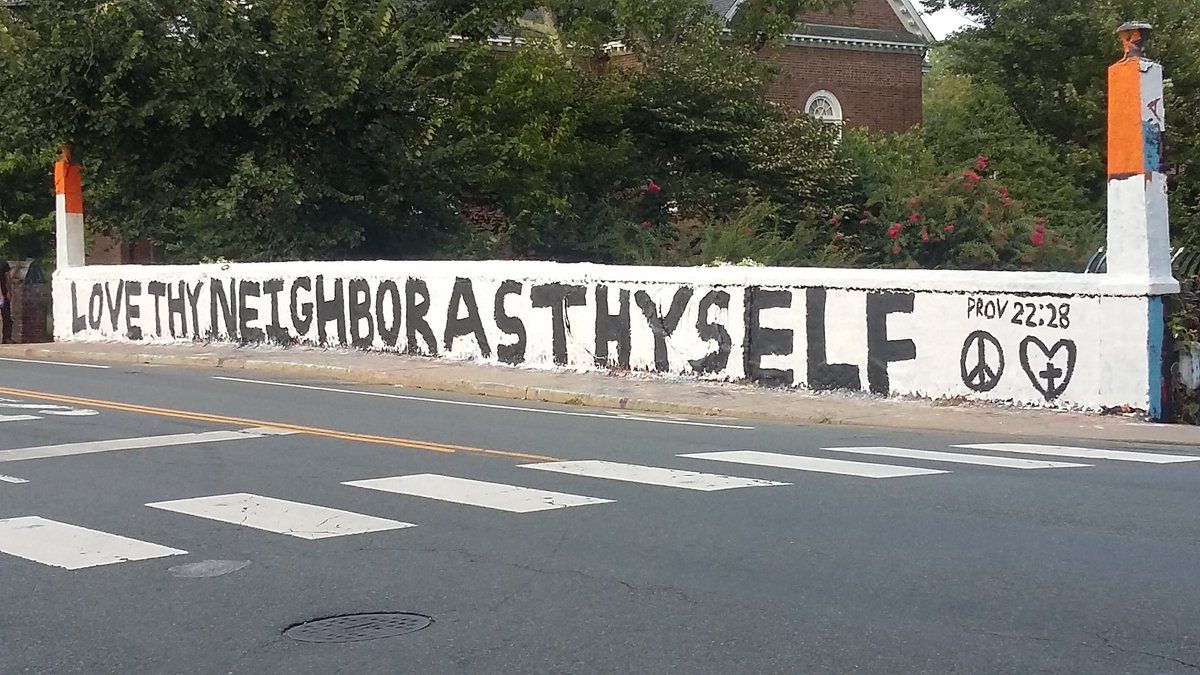
By Margaret Heenan Smither
I just returned from a beach weekend with a group of my sorority sisters from the University of Virginia (UVA). We are lawyers, accountants, consultants, teachers, federal government workers, counselors, and one of us is facing mandatory retirement as a special agent with the FBI. While our paths have diverged, we all shared a magical four years at Mr. Jefferson’s University and proudly walked down the legendary “Lawn” when we graduated. The beach weekend happened to coincide with the one-year anniversary of the Unite the Right rally that turned deadly in that magical place.
I will never forget the feeling in the pit of my stomach when I first saw the images of white supremacist thugs marching down the UVA Lawn – my Lawn – bearing hate and flaming Tiki torches. In a place that had always evoked awe and fun and history, all at the same time. And later, after reflecting on the events, I was of two minds.
What if no counter-protesters had shown up? What if everyone had stayed home and there was no one around to be intimidated or angered by the show? I imagined the whole event ending with a bunch of guys milling around shouting anti-Semitic and racist taunts at no one. Their voices echoing back at them from a gleaming Rotunda dome. As Thomas Jefferson once said, “Nothing gives one person so much advantage over another as to remain always cool and unruffled under all circumstances.”
But is it right for people of conscience to just sit back and sadly shake their heads? Or is it more important to go there and shake a fist and follow Elie Wiesel’s directive, “Silence encourages the tormentor, never the tormented.” Is it cowardly to actively choose not to confront a clear and present malevolence in one’s own back yard? Thomas Jefferson also said, “All [that] tyranny needs to gain a foothold is for people of good conscience to remain silent.”
I haven’t fully decided which approach is more powerful – but I know the human urge to act, or “counteract” in these circumstances is strong – perhaps too strong for many people to resist standing up to evil, face to face. But confrontations with force draw a crowd, and media, and more attention to the “cause.” In the end, it’s a personal choice: Confront it, or purposefully relegate it to the silent disregard that it deserves. Each requiring some degree of courage or restraint.
I saw a photo of UVA’s famous Beta Bridge from this past weekend – the traditional landmark for students to paint messages, from the profound to the enigmatic – on which someone had painted “LOVE THY NEIGHBOR AS THYSELF.” That’s the UVA I know. Never perfect but always striving toward goodness – much like Thomas Jefferson himself – and constantly in need of a reminder to love. With all the turmoil over the last several years – from the murder of UVA student Yeardley Love, to campus sexual assault incidents, to the brutal attack on Martese Johnson, an African American UVA student beaten near campus by liquor control agents – those painted words on the bridge are a fitting epilogue. Or maybe a prologue, signaling a turning point and a new beginning.
Watching the waves roll in on the beach was a perfect metaphor for the constancy of endings and beginnings, surrounded by decades of friendship and shared history. Just as the tide is deceptively mighty, so too is the call to justice and love, which may be answered by bold action, or purposeful inaction. But always striving toward love.
Margaret Heenan Smither is an attorney in Richmond, Virginia. She is a trained observer for the ACLU and an alumna of the University of Richmond School of Law and the University of Virginia.

